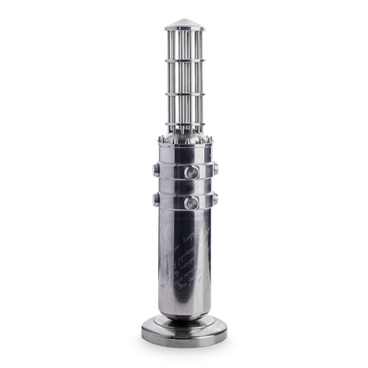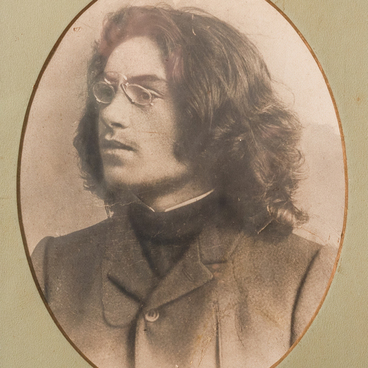The Vitaly Aleksandrovich Zakrutkin Memorial Museum features a unique painting created by Eastern artists. The artwork consists of a river mussel shell glued to a base and lacquered. This distinctive painting was brought from China by Vitaly Zakrutkin’s friends and gifted to the writer as a memento.
The painting portrays a night landscape with a dark sky illuminated by a full moon, casting a gentle light on the surface of a deep, mighty river. Two houseboats, traditional dwellings of Chinese fishermen, are anchored on the water. These fishermen often lived on such boats for weeks while catching and salting fish. One of the oldest and most popular fishing methods in China involves using trammel nets — long sheets of mesh laid on the bottom of a reservoir. Fishermen then use boats to pull the nets and collect their catch. The fishermen depicted in the painting are engaged in this very practice. On one of the boats, a fisherman is shown with a fishing rod, a familiar sight during night shifts as fishermen work to maximize their catch.
A picturesque scene featuring Chinese fishermen on the water has become one of the most popular motifs for Chinese souvenirs. The shell painting showcased in the exhibition is a highly artistic example of a Chinese souvenir from the second half of the 20th century, frequently brought home by residents of the CIS countries.
Shells played an important role in the everyday life of the Chinese. Mollusk shells were used as currency during the Shang Dynasty (1600 BCE — 1046 BCE). The unit of shell money is called “péng” (朋), a Chinese character meaning “friends”. The hieroglyphic sign for money schematically depicted a shell, and today, images of shells can still be found on Chinese banknotes. These shells were brought from the Ryukyu Islands. In Chinese Buddhism, the shell is one of the eight emblems of good fortune, symbolizing preciousness and purity, and it can also serve as an allegory for royal power.
This painting on display in the museum was housed in Zakrutkin’s home for many years.



